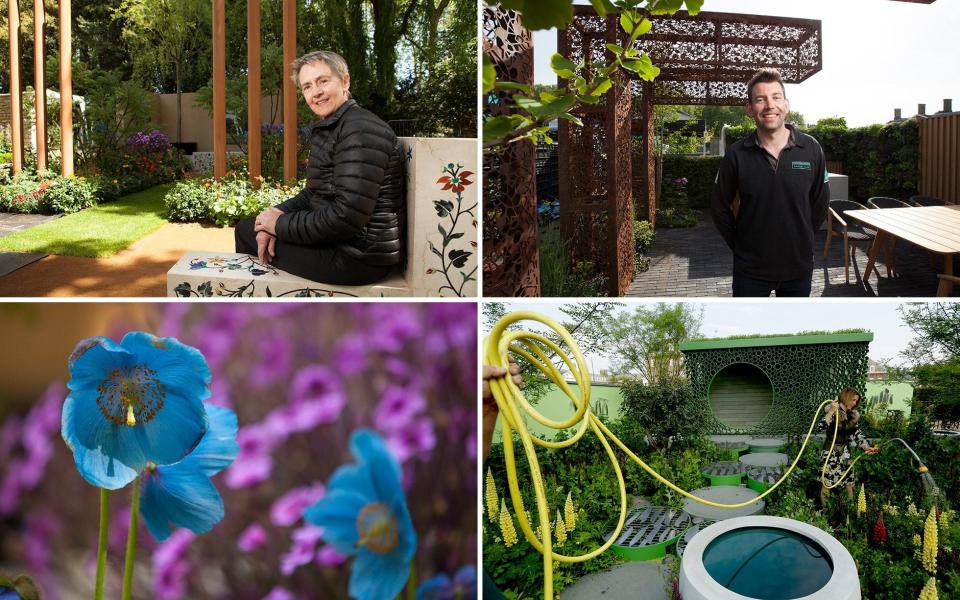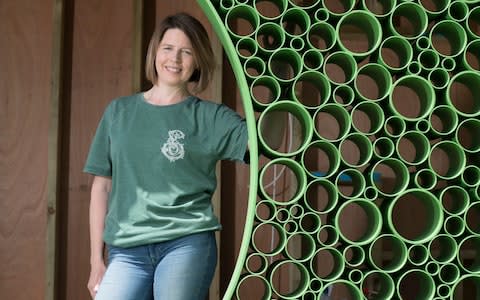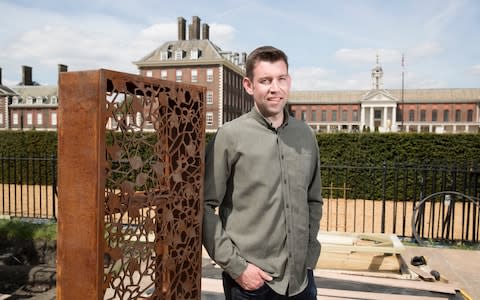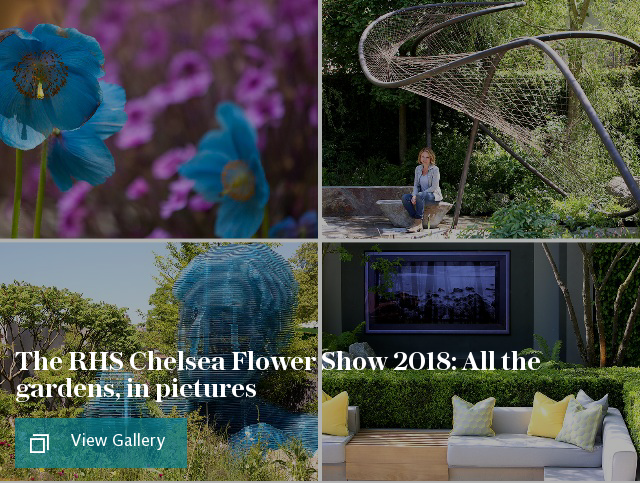Chelsea Flower Show 2018: Three small gardens packed with big ideas

Here, we meet the designers behind three gardens at this year's Chelsea Flower Show.
Dr Catherine MacDonald
Think that peas are merely a side dish? Think again.
The Seedlip Garden (RHW291) takes on the humble Pisum sativum in the Space to Grow category. But, as designer Dr Catherine MacDonald (who has a PhD in genetics) shows, there’s far more to a pea than meets the eye.
There’s something folksy about the Fabaceae family of peas and beans (The Princess and the Pea and Jack and the Beanstalk spring to mind), but scientific tendrils run through Dr MacDonald’s multi-sensory take on it, too: “I laid the garden out on a 4 x 4 grid to represent a Punnett square diagram, which you use when you cross a plant and look at the code,” she explains.

“We’re championing three pea pioneers from three centuries: geneticist Gregor Mendel, who crossed more than 28,000 pea plants in the 19th century, Dr Calvin Lamborn, who bred the first sugar snap and passed away in August last year (the garden also features exclusive releases of two new varieties), and finally, Seedlip’s Ben Branson, who’s taking the pea forward by distilling it into his non-alcoholic spirits.”
The plant palette is firmly focused on the pea, and other members of its vast family, which includes lupins, blue wild indigo, trees in the sophora genus, the carob tree, the bumblebee favourite red clover, and legumes including lentils and peanuts. Pea family plants attract insects, and play a vital role in soil fertility by fixing nitrogen.
A path made of circular elements leads to a “peavilion” with a façade of green aluminium tubing welded together. For Dr MacDonald, it’s the pièce de résistance: “When I saw the metalwork for the first time, it made me feel a little bit emotional. It exceeded my expectations.”
Her only regret? It doesn’t look like her peanut plant is going to make it to Chelsea. “The weather hasn’t helped,” she admits.
Sarah Eberle
Having won many an award at Chelsea, Sarah Eberle says that her most memorable was Best in Show in 2007.
“I consider myself a person who makes places, rather than gardens,” she says. “I tend to be inspired by culture and landscape, and it gives me payback, because it broadens my knowledge.”
This year, she has taken on a gargantuan topic for her Artisan Garden – India. Prompted by the 2017 documentary on the life of legendary cricketer Sachin Tendulkar (the vivid blue of meconopsis poppies allude to his iconic jersey), India: A Billion Dreams (AR564), sponsored by the British Council, represents aspiration, as well as marking the end of the UK-India Year of Culture.

“What Sachin Tendulkar has done for Indian cricket and to inspire youth is amazing. But this garden is also about the colours and the energy of India,” says Eberle, who has worked with red roses, tulips, blue Vanda orchids, jasmine, willow and banyan tree roots carved into stumps. The inlaid marble work is traditional, but it sits alongside modern elements such as billboard-like paintings of children playing cricket, produced by Indian artisans. “Much like India itself, it’s a mishmash of old and new, cheek by jowl. That’s what gives it so much energy.
“The marble is classic and instantly identifiable – almost a caricature – and that draws the viewer in.”
But even by Eberle’s standards, this garden has been a challenge. “There’s a fine line between chaos and the energy I want to create,” she says. “It has been a test of all my skills to get the balance right. I was nervous about the materials made in India, because I couldn’t keep a constant watch – but they arrived, which was a weight off my mind. There are moments of huge stress, but there’s always a solution – you just have to find it.”
This year, one of the biggest challenges has been plant material. “Everything has been at least two weeks behind because of the weather. Luckily, meconopsis grow best in a cold environment.”
Tony Woods
Chelsea first-timer Tony Woods, the designer behind the John Lewis roof garden and the Floating Pocket Park at Paddington, has some imaginative ideas for town gardeners. “I want visitors to realise that they can create something very special in a small space,” he explains.
His Space to Grow garden Urban Flow (RHW286), sponsored by Thames Water, is a visual wonder, with a delicate pergola that both affords privacy and creates a “journey” from the home into an outdoor room complete with a “living larder” wall of edibles, including flowers, herbs, salad and soft fruit.
But it’s also subtly, cleverly sustainable, with rain-garden pockets of tough, hardy plants such as ophiopogon.

“The theme of the garden is flood-resistance – but not in a pushy ‘this is how you should do your garden if you care about the environment’ way,” Woods says. “We see so many ultra-small new gardens that are badly fitted with permeable paving. But why not take beautiful materials and use them sustainably from the start, creating something that looks fantastic and is affordable and long-lasting?”
Dark foliage and distinct leaf shapes contrast with more formal evergreens: there’s Rosa glauca, Baptisia australis, Cornus canadensis and angelica, while a multi-stemmed Ginkgo biloba tree, a pollution-tolerant air purifier, absorbs rainwater, as well as providing gorgeous autumn colour.
The biggest challenge of his debut at Chelsea? “The temptation is to put too much in,” he says. “We’ve got a lot going on, but we’ve tried to make it quite understated.”
Is your garden a prize winner? We'd like our readers to share photos of their own green spaces, and we will publish the best images online. Please send a photo of your garden to mypic@telegraph.co.uk



